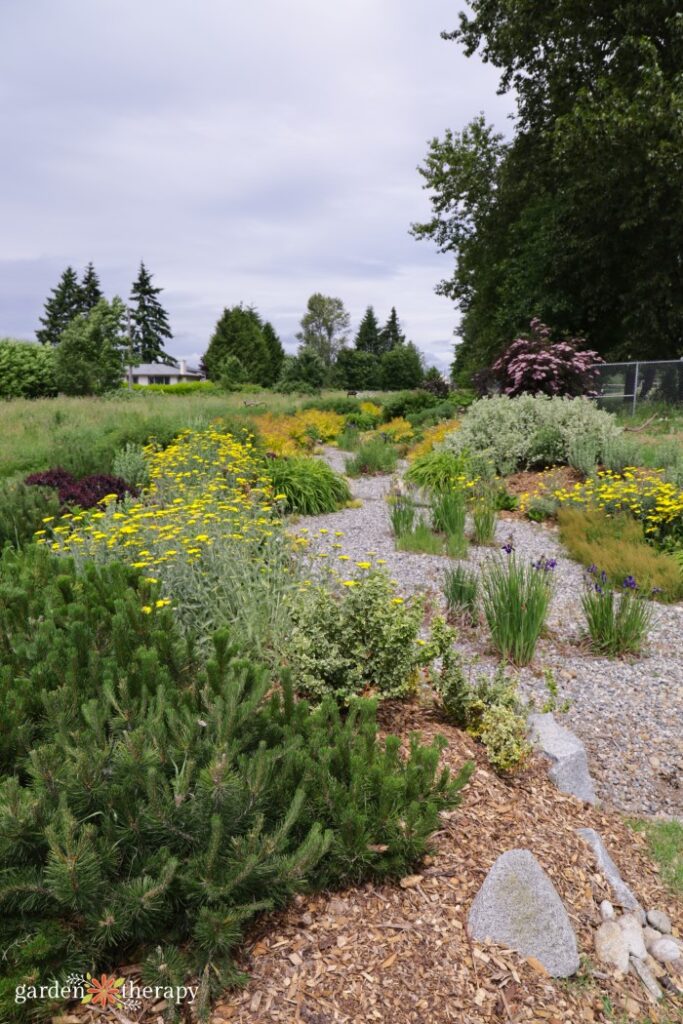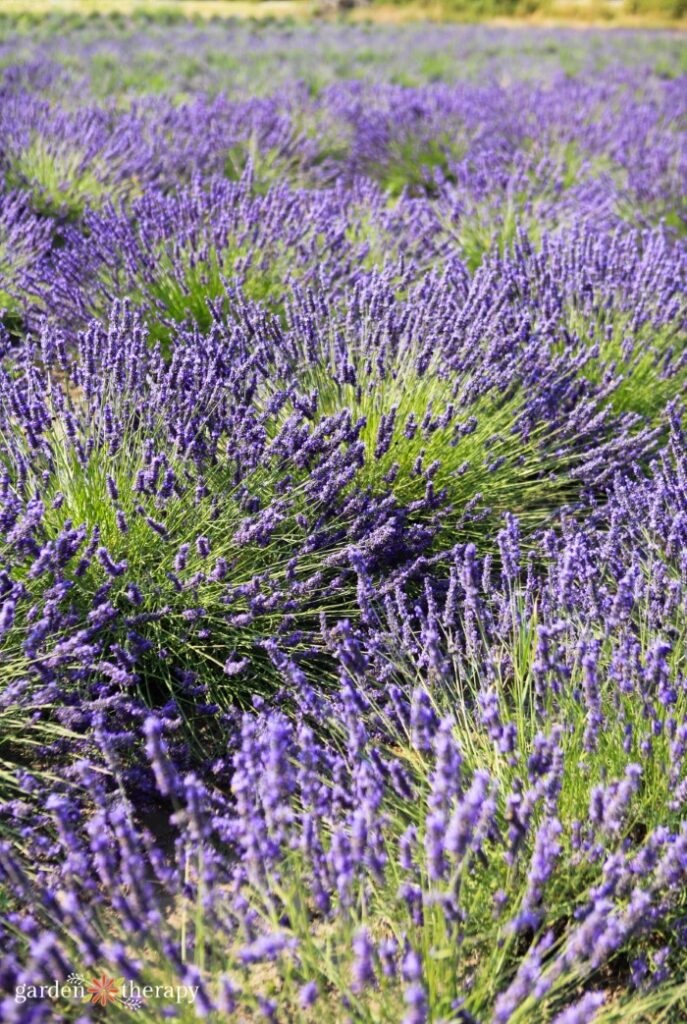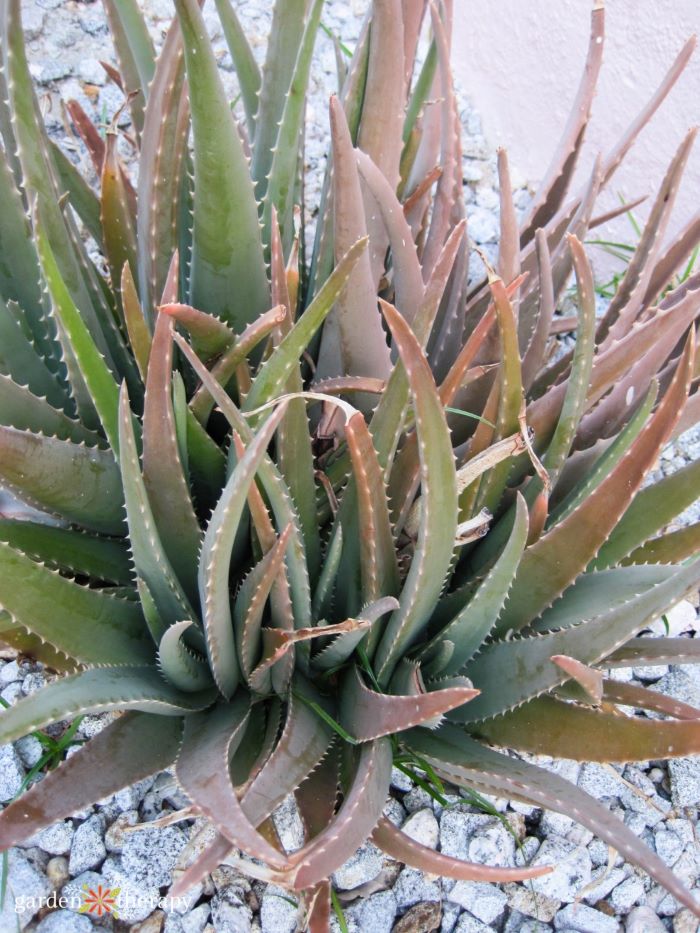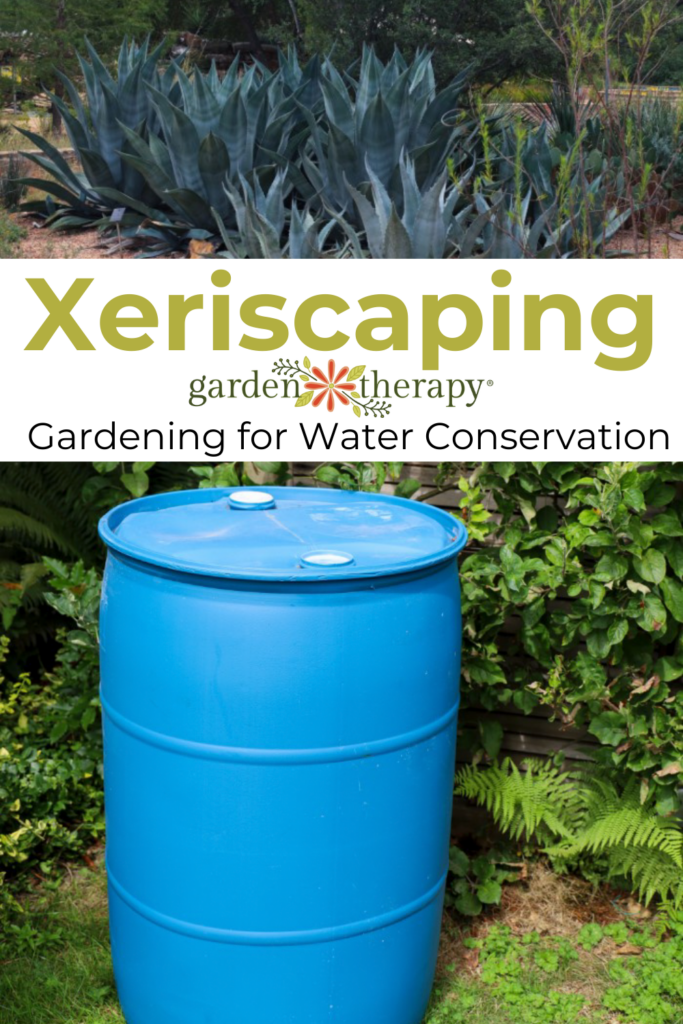Xeriscaping isn’t limited to the desert or areas with drought; everybody can actively work to conserve water in their gardens. You can xeriscape your garden to help save water, time and money. Here are the best xeriscape ideas to try and some drought tolerant plants to include in your design.
With extreme drought gripping most of western North America, it’s a good time to look at ways to conserve water in your garden. Even if your area is not currently experiencing drought, employing the principles of xeriscaping will benefit your garden and save you time and money.
Xeriscaping means conserving water through creative landscaping. There are a few basic principles in xeriscape: water conservation, drought-resistant plants, little or no lawn, improving soil, mulching, and watering wisely.
Using these xeriscape ideas will not just save water; your landscape and garden will require less maintenance, thus freeing up a lot of time.
This post will cover…
- The Principles of Xeriscaping
- Water Conservation
- Xeriscape and Drought-Tolerant Plants
- Little or No Lawn
- Improving Soil
- Mulching
- Watering Wisely
- Frequently Asked Questions About Xeriscape Design
- More Tips for Water Conservation
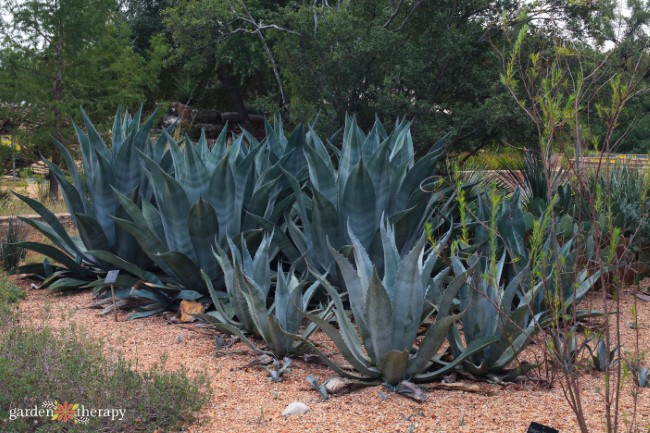
The Principles of Xeriscaping
Water Conservation
Since the main goal is to reduce the amount of water needed for your garden or landscape, the first thing to look at is your garden conditions. Taking note of how much sun the area gets, the natural drainage pattern of the land, and other large plants already in the area will help you determine plant choices.
With this information, you can use it to plan a sustainable garden with limited water needs and one that can rely on natural precipitation.
Grouping plants together based on similar watering needs can also establish watering zones. Watering zones maximize efficient watering by ensuring that only those plants that need a bit of supplementary water are contained in zones.
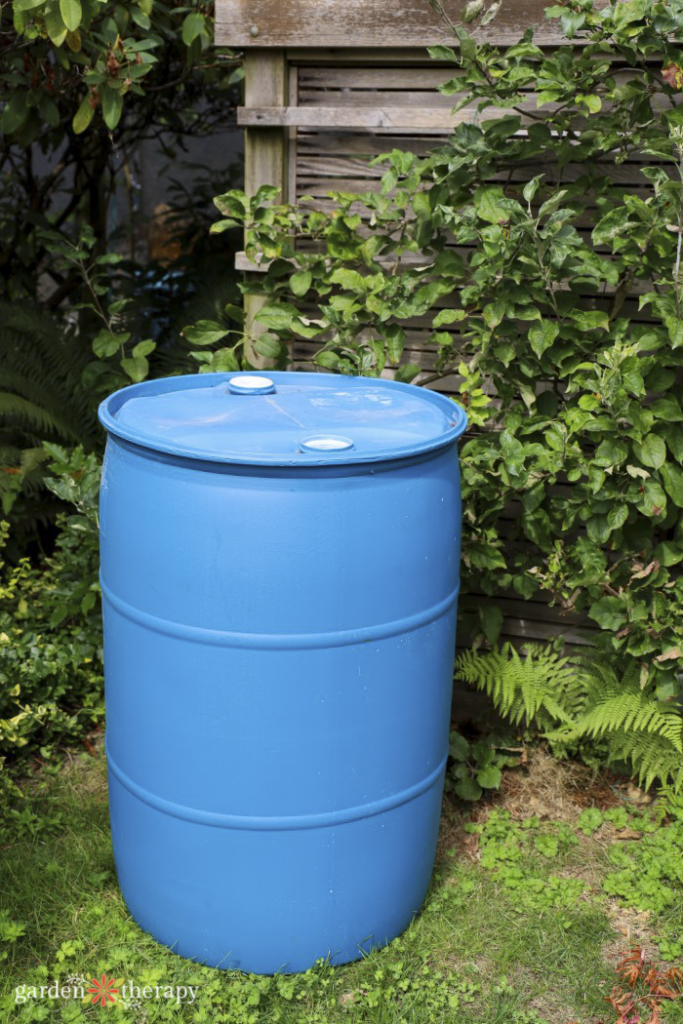
Xeriscape and Drought-Tolerant Plants
The best plants for a xeriscape garden are the ones native to your area. Native plants know how to survive in the region where they originated.
When you take a plant out of its natural habitat, you have to mimic its native surroundings for it to thrive. That doesn’t mean you cannot have exotic plants. Save those types for an area where you can afford to give extra attention.
Established native plants will bounce back quickly when the rain returns. Nonetheless, many plants can survive on little water.
Some examples of drought-tolerant plants are:
- Agave
- Artemisias
- Asters
- Baby’s Breath
- Black-Eyed Susan
- Columbine
- Coreopsis
- Cosmos
- Delphinium
- Echeveria
- Echinacea
- Gloriosa Daisy
- Iris
- Lamb’s Ears
- Lavender
- Macrocarpa
- Marigold
- Pansy
- Penstemon
- Phlox
- Red Plume Blanket
- Rose Campion
- Sages
- Santolina
- Sedums
- Sempervivum
- Statice
- Sunflower
- Tulips and crocuses
- Vinca
- Yarrow
- Yucca
- Zinnias
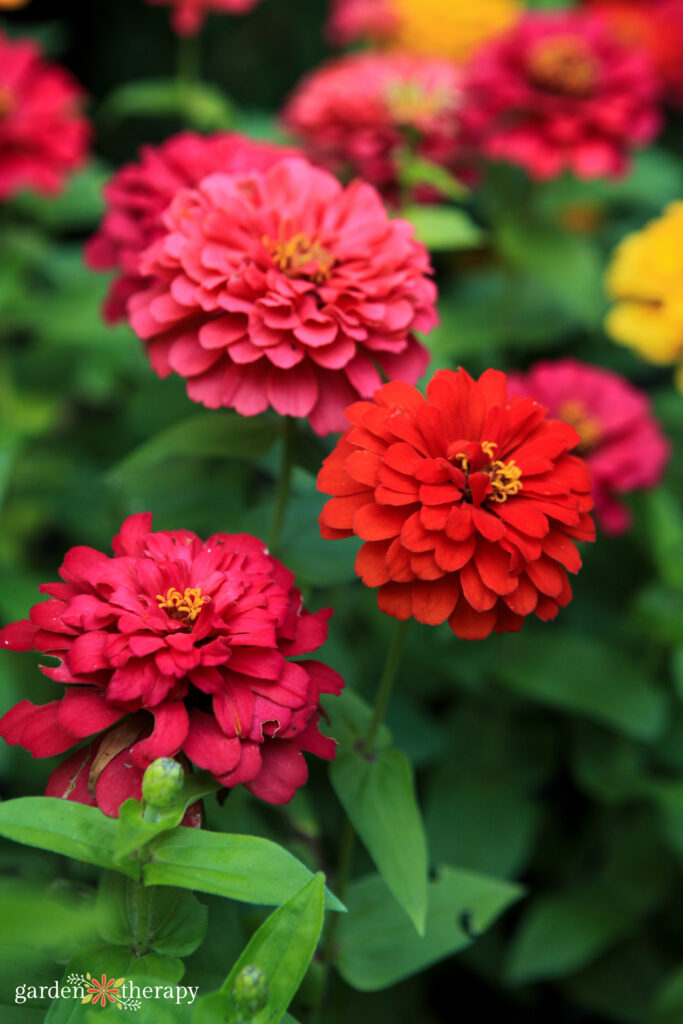
Little or No Lawn
If you don’t need a lawn, get rid of it. Keeping a lawn green uses an exorbitant amount of water. If you want to have a green area, try using low-maintenance ground covers or drought-tolerant grass species for your area. Check with your local garden center for recommendations.
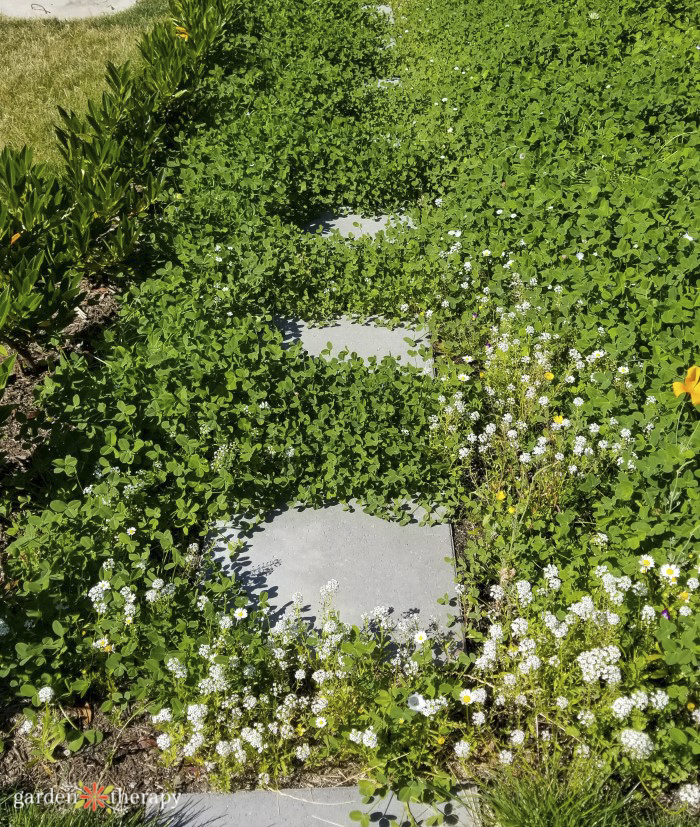
Improving Soil
The perfect soil in a water-conserving landscape must drain well and retain moisture. What? Yes, it is possible. You can achieve this by adding good compost and manure to feed your soil.
Again, the soil needs to match the requirements of the plants. For example, succulents and cacti need sandy/lean soil and would not benefit from compost-rich soil. If unsure of your soil chemistry, get a soil test kit from your local garden center or contact your local extension service.
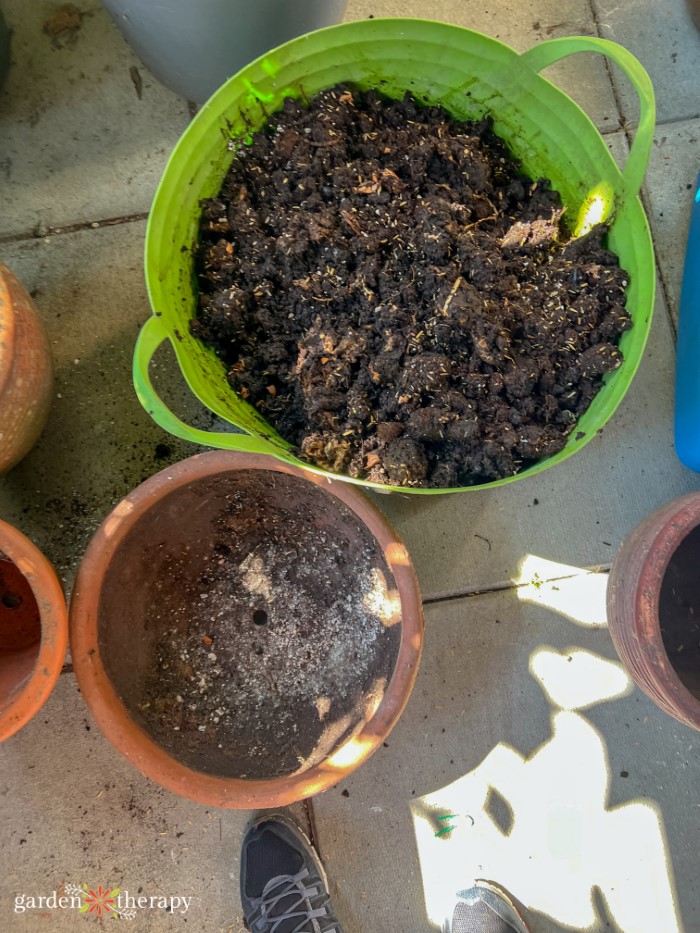
Mulching
Mulch helps retain soil moisture, mitigate temperature fluctuations, prevent erosion and smother weeds. Organic mulch such as leaves, coarse compost, bark, pine needles or grass clippings will break down throughout the season and incorporate into the soil.
This will help improve the soil over time as well. You need to add more as it breaks down. For mulch to be effective, it needs to be several inches thick.
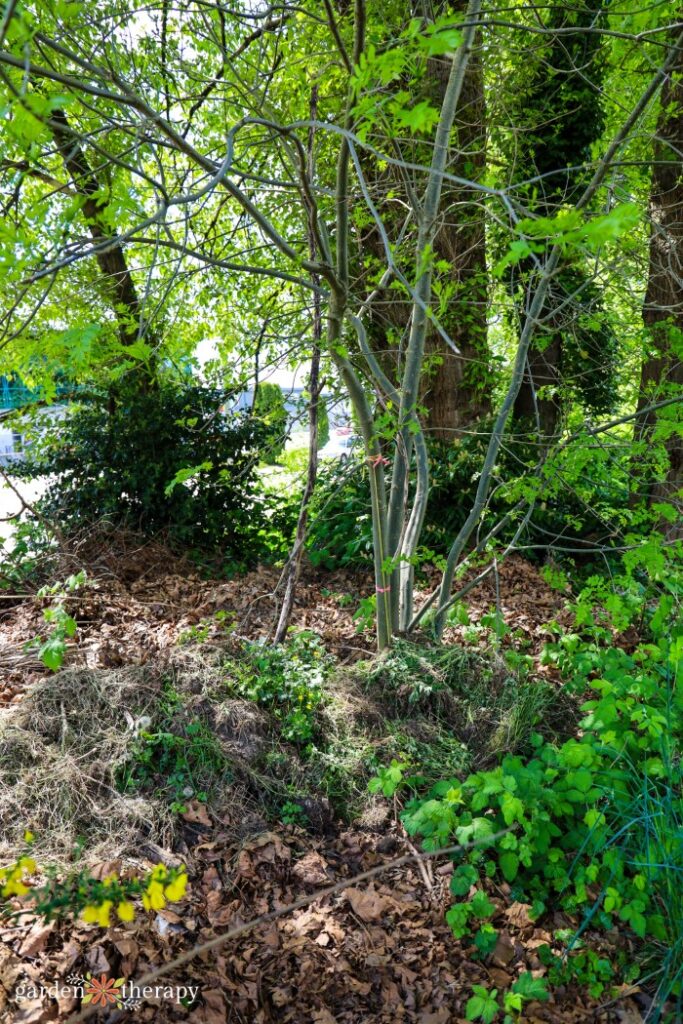
Watering Wisely
In order to water effectively, water needs to be applied to the base of the plant. Drip irrigation and soaker hoses are the easiest and most efficient way to get water to the base of your plants, not overhead sprinklers.
If an irrigation system is not in your budget, hand water in the mornings or early evenings and avoid the middle/hottest part of the day. Watering in the mornings and early evenings will ensure that the plants absorb the water, and little will be lost to evaporation.
Aim for a deep watering 2-3 times a week versus a light daily watering.
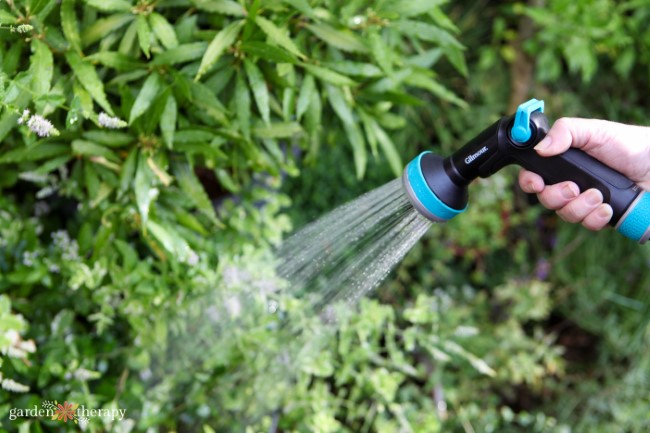
Frequently Asked Questions About Xeriscape Design
Get rid of any lawn, as they’re big water guzzlers and require a whole lot of maintenance. Front lawns are rarely used compared to the backyard, becoming wasted space.
You can increase your curb appeal by making the space uniquely yours. First, find inspiration about what you want your space to be. You can do wildflowers for pollinators, trees for a shade garden, a courtyard with seating, adecorated walkway to your front yard, or anything else that suits your fancy.
Once you have your inspiration, find native and drought tolerant plants to xeriscape the front yard. Also, consider watering practices and how to conserve rainwater in your xeriscape design.
The best plants you can use for xeriscaping are those which are native to your area. These plants survive on natural rainwater and will require very little, if any, supplemental watering.
Drought tolerant plants are also good xeriscape plants, as they don’t mind going through periods of no rainfall and won’t require you to step in with the soaker hose.
Zeroscaping uses almost no plants in its design. Instead, it decorates a landscape using stones, gravel, dirt, and other non-living elements. It may use a couple of plants, but it will be very few. Overall, zeroscaping landscapes are typically plain and common in desert environments.
Meanwhile, xerscaping is about planting drought tolerant and native plants to limit water usage. You can still have lots of plants; they’re just carefully chosen.
The Greek word for dry is Xēros, which has become the root for many English words relating to dry. In 1982, The Water Department of Denver, Colorado, coined the term xeriscaping to describe the practice of using plants that require little water, alongside water conservation techniques, in landscaping.
Even if your area is not experiencing a drought, xeriscaping principles can save you time and money. By employing the basic xeriscaping principles, your garden will flourish with little effort.

